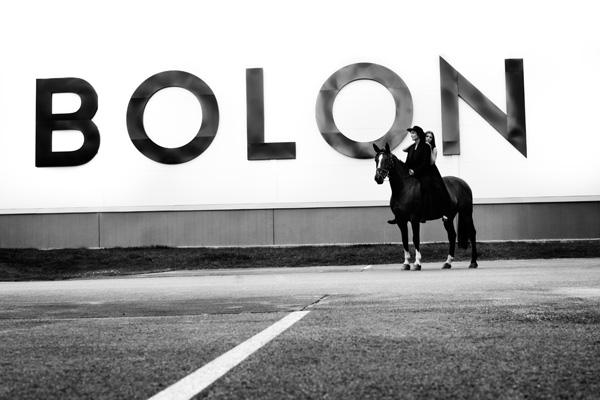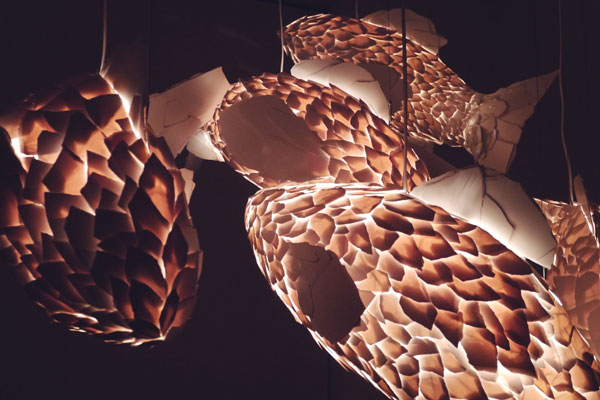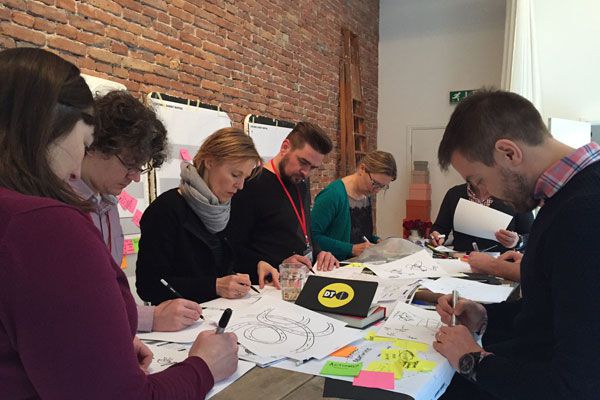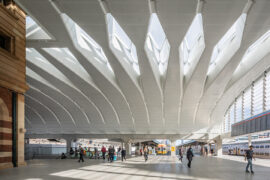The architect tells us how he hopes to make a positive impact through his young studio, Red Bean Architects.

June 27th, 2012
When Teo Yee Chin established his own architecture and design firm in 2007, he decided to call it Red Bean Architects. First there was his love of local desserts, in which red bean is a common ingredient, but on a deeper level, Teo explains that it serves as a metaphor of the studio.
“The bean shape is quite a complex surface… and you seldom get one bean, you get a whole bag of beans. Each one is different, but they all exist together. It’s a very populist kind of idea, because the structure is such that there is no hierarchy, there is no fixed form, it’s very free… I think it generally expresses my beliefs, [which] are more democratic, a bit more socialist.”

East Coast Drive – the pixelated brick facade is inspired by the setting sun
Prior to setting up Red Bean Architects, the 37-year-old worked for William Lim Associates (now W Architects), Kay Ngee Tan Architects, and Architects 61. In between, he took his master’s degree in Architecture at Harvard University, where the telling signs of a strongly independent nature were becoming apparent.
“Usually when people go overseas [to study] they will look for the most famous or most notable professors and kind of go and learn under him or her… but when I went there I had my own way of thinking and didn’t want to bend myself to [their prevalent] ways of thinking,” says Teo.

East Coast Drive – the patterned brick screen draws natural light and fresh air into the master bathroom
Back in Singapore while working at Kay Ngee’s firm – where projects were mostly interiors and small houses – he picked up some of the architect’s design sensibilities, such as his tendency to draw on art for inspiration, rather than architecture. At the opposite end of the spectrum, Architects 61 gave Teo exposure to very large projects, and he found himself constantly rushing to fulfill developers’ requirements.
“[Working at Architects 61] was good training, but it also made me kind of dislike that kind of development culture in Singapore,” shares Teo.


Competition entry: Kaohsiung Maritime & Pop Music Center
“I believe that to do good work you have to set the parameters right. That means if I give you a condominium to do, I believe that you can never do it right, because the conditions that set up that project in the first place is to get profit, it’s to catch the market, it’s to [build] the most number of units…
“I just want to do things well, and that means doing the right project type, having enough time, and getting enough pay for it. [It means] I can assign [enough] resources to it… and can take 3 months to design and not 2 weeks or 5 days,” Teo explains.


Food for Thought, Botanic Gardens
He continues, “I really like working with an institution or an organisation that is not profit-driven, and that has a kind of common mission statement – [with] everyone working towards that.”
The architect is now busy charting the studio’s long-term path along this course.
So far, project examples that lean in this direction include the Thought collective, namely Food For Thought, a café and social enterprise where part of the business profits go to help the needy all over the world; and School Of Thought, best described as a “socially responsible tuition programme” that goes beyond academia to promote broader world affairs and ways to “make a difference”.
Teo and his team are also working on building extensions for the People’s Association headquarters (a government statutory board), a project that he first got involved in while at Architects 61, and which he is also particularly proud of. He also says that he plans to focus on more of such projects in the public realm.


Tong Tong Friendship Store, Shaw Towers. The moon gate serves as the main entrance to the store
Admittedly, the youthful firm is still building up such body of work; to date, most of its projects are still fairly small in scale and a good number involve private residences, though Teo says such assignments do allow them to “explore some ideas of form and material”.

The architect believes in the ’self-ordering potential of matter’ – i.e. materials want to be used in a certain way. At Tong Tong, he has folded metal (a foldable material) to form a screen

Store interior
Teo is keen to stress that good intentions produce good buildings, and explains it thus: “If a person wants to build a building for a good cause, then I think the architect will rise to the occasion the share the vision, because it’s a worthy cause… the client or the organisation that needs that building… or the public that needs those spaces, I think, will inspire the architect to do an awesome space.”
Red Bean Architects
redbeanarch.com
INDESIGN is on instagram
Follow @indesignlive
A searchable and comprehensive guide for specifying leading products and their suppliers
Keep up to date with the latest and greatest from our industry BFF's!

London-based design duo Raw Edges have joined forces with Established & Sons and Tongue & Groove to introduce Wall to Wall – a hand-stained, “living collection” that transforms parquet flooring into a canvas of colour, pattern, and possibility.

Merging two hotel identities in one landmark development, Hotel Indigo and Holiday Inn Little Collins capture the spirit of Melbourne through Buchan’s narrative-driven design – elevated by GROHE’s signature craftsmanship.

Bolon celebrates ‘The Story of Bolon’ with the launch of a limited edition book and a trip to Australia for Sydney Indesign.

From high school theatre buff to accomplished architect, Mark Raggatt reveals what drew him to his career, and outlines what his practice hopes to achieve as it expands into NSW.

JJ Acuna gives us a tour of the Frank Gehry: Fish Lamps exhibition, currently on show at Gagosian Hong Kong.

Grace Turtle, MashUp’s Customer Experience Designer, has had a busy start to the year. She attended a DesignThinkers Bootcamp in Amsterdam, spoke at Link Festival in Melbourne and also at The Future Laboratory’s Sydney Trends Briefing.
The internet never sleeps! Here's the stuff you might have missed

Community, Country and climate were centred at the 2025 Australian Institute of Landscape Architects (AILA) Awards in Lutruwita/Tasmania on 21st October.

The Australian Institute of Architects has unveiled 43 projects representing the pinnacle of contemporary design, with winners addressing housing, climate and affordability crises through innovative solutions.